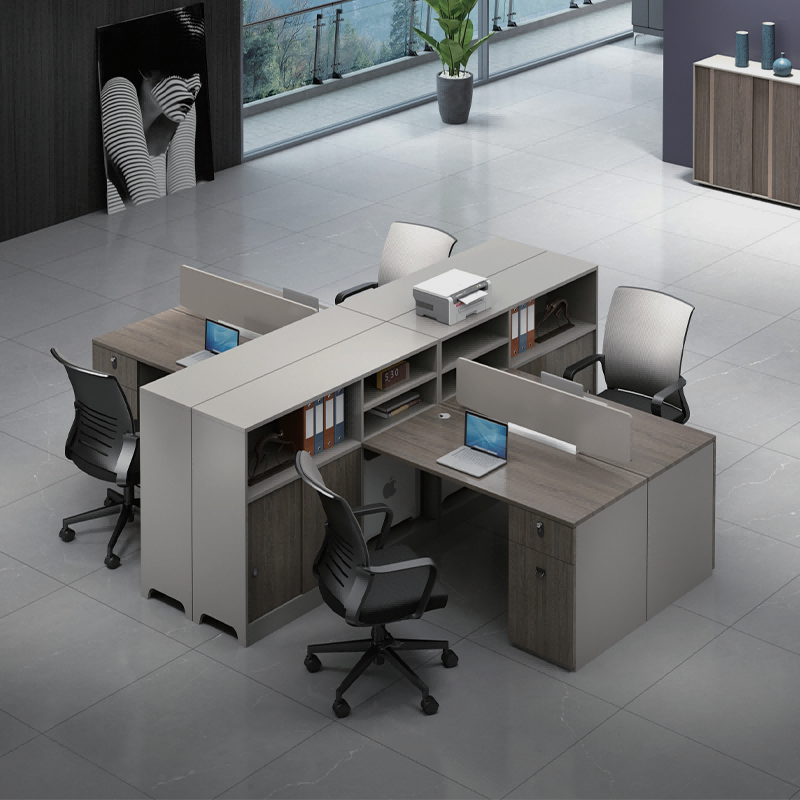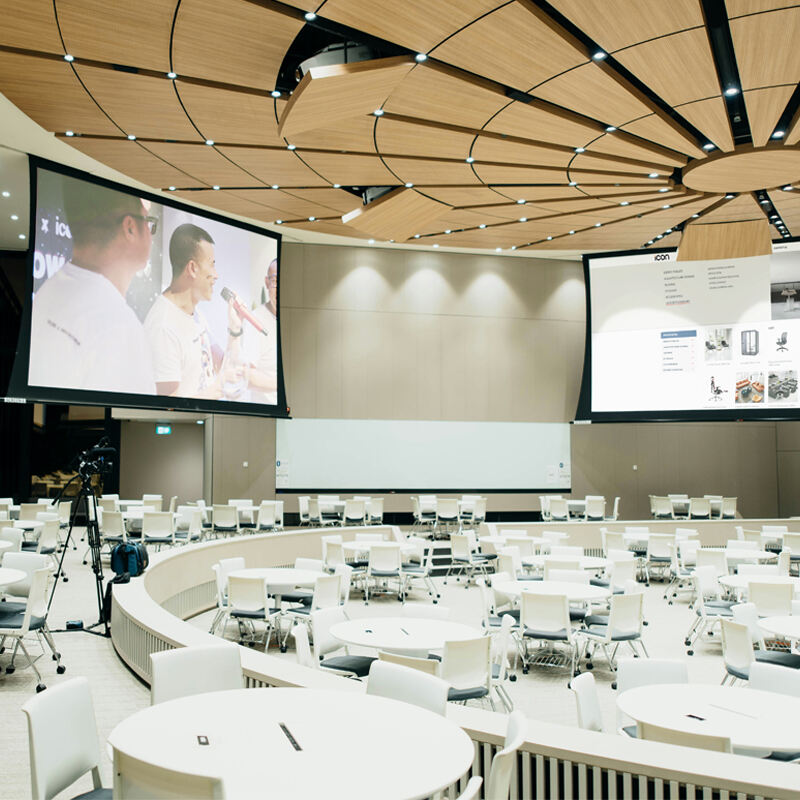The Evolution of Office Spaces in the 2020s
Hybrid Work Models Reshaping Design Priorities
In recent years, the rise of hybrid work models has prompted a reevaluation of traditional office layouts, focusing on flexibility and adaptability. Organizations now recognize the need for spaces that can easily transition between collaborative group settings and individual workstations. This shift ensures that diverse workflows are optimally supported in a dynamic work environment. As of 2023, statistics reveal that 63% of companies have redesigned their office spaces to accommodate hybrid work demands. This demonstrates a substantial transformation in the way workplace environments are structured, highlighting an emphasis on multifunctional solutions and modular desk systems to maximize space use and productivity.
Shift Toward Employee-Centric Layouts
Modern office design is increasingly prioritizing employee well-being by creating environments focused on comfort, accessibility, and collaboration. Designers are actively seeking feedback from employees, crafting personalized workspaces that not only enhance productivity but also improve job satisfaction. According to recent statistics, 82% of employees report feeling more productive in a workplace that is tailored to their needs. This underscores the importance of incorporating employee-centric designs, where factors like ergonomic furniture, ambient lighting, and versatile office table ACCESSORIES play vital roles in enhancing overall work experience.
Rise of Multifunctional Commercial Solutions
The demand for multifunctional furniture solutions has surged, particularly in smaller office settings where space optimization is crucial. These flexible designs ensure that aesthetics are not compromised while maximizing utility. The popularity of modular desk systems is a testament to this trend, as these setups allow for easy reconfiguration of office spaces to align with project requirements and team dynamics. Adoption of such multifunctional solutions has grown by 40%, reflecting a growing preference among businesses for cost-effective methods to enhance their commercial office environments. This increase highlights the importance of solutions that can adapt to new norms in office design, meeting the dual objectives of function and form.
These evolving trends reflect the broader shift towards creating office environments that blend flexibility with employee-centered design, ensuring spaces that are equipped for the diverse needs of modern workforces.
Ergonomic Breakthroughs Reimagining Workspaces
AI-Powered Posture-Correcting Chairs
Incorporating AI technology in office chair designs has revolutionized how we approach workplace ergonomics. AI-powered chairs provide real-time feedback, allowing users to adjust their posture effectively, thereby reducing strain on the back and neck. Companies that have adopted these innovative chairs report a 30% decrease in back and neck pain among employees. This advancement not only enhances individual health but also fosters a more productive work environment.
Smart Height-Adjustable Desks with Memory Presets
Height-adjustable desks with memory presets are a smart solution to modern workspace needs, allowing users to effortlessly switch between sitting and standing postures. Such flexibility in desk usage has been linked to a 15% increase in energy levels and greater employee engagement. By seamlessly integrating ergonomic considerations and user-friendly features, these desks cater to the dynamic demands of a productive workday.
Modular Workstation Ecosystems
Modular workstations are increasingly popular thanks to their versatility in accommodating different work styles and encouraging team collaboration. These ecosystems are designed to adapt to changing team sizes and functions, ensuring that businesses can reorganize spaces efficiently to meet project requirements. The ability to tailor workstations to specific needs without compromising on productivity makes them an invaluable asset in the modern office environment.
Intelligent Office Systems for Modern Workflows
Wireless Charging Integrated Work Surfaces
Integrating wireless charging pads into office work surfaces marks a significant advancement in modern office convenience. Wireless charging surfaces eliminate cable clutter, which enhances both the aesthetics and functionality of workspaces. Employees benefit greatly from this innovation, with many reporting a 20% increase in comfort and convenience when using these advanced surfaces. This smart office technology not only improves the user experience but also supports productivity by facilitating a more organized work environment.
IoT-Enabled Climate Control Desks
IoT-enabled climate control desks are revolutionizing workplace comfort by allowing personalized temperature settings. These desks adjust according to user preferences, promoting an environment conducive to increased productivity and comfort. Utilizing IoT technology, these desks offer real-time climate monitoring, resulting in energy savings of up to 10% in office environments. This smart office design element aligns with the growing trend towards sustainable and energy-efficient office solutions, enhancing the overall appeal of modern workspaces.
Voice-Activated Storage Systems
Voice-activated storage systems streamline the efficiency of retrieving essential office supplies, significantly improving workflow. By enabling employees to efficiently locate and access materials, these systems foster a more interactive and dynamic work environment. Office automation through voice-activated storage reduces the time spent searching for items, allowing employees to focus on more critical tasks. This innovation not only enhances productivity but also aligns with the broader trend of integrating advanced technology into workplace environments for greater operational efficiency.
Sustainable Furniture Revolution
Carbon-Negative Material Innovations
Carbon-negative material innovations are revolutionizing furniture manufacturing by prioritizing environmental impact. These materials, such as carbon-negative composites, are reshaping the industry through their sustainable approach. This innovation aligns with global sustainability goals and encourages businesses to adopt these eco-friendly materials, significantly reducing their carbon footprints. As more companies transition to using carbon-negative materials in their furniture production, the overall environmental impact is lessened, supporting a greener future.
Upcycled Industrial Component Furniture
Upcycled industrial component furniture is making a mark in the design world by giving materials a second life while enhancing their aesthetic appeal. This trend represents a shift towards environmental responsibility in the furniture industry and showcases the ability to transform waste into stylish, functional pieces. With upcycled furniture sales increasing by 25% in recent years, it's evident that both businesses and consumers are embracing this sustainable approach. By repurposing materials, the furniture industry can reduce landfill waste and foster a circular economy.
Biophilic Design Integration Strategies
Biophilic design principles are gaining traction by incorporating natural elements into office environments, thereby enhancing employees' connection with their surroundings. This approach fosters a more comfortable and inspiring workplace, aligning with the growing trend of prioritizing employee wellness. Research indicates that biophilic designs can improve employee well-being and productivity by as much as 15%, making it a significant strategy for companies seeking to boost efficiency. By integrating elements like plants and natural light, office spaces become more inviting and harmonious, contributing positively to the overall workplace atmosphere.
Adaptive Designs for Collaborative Environments
Customizable Desk Configurations
Customizable desks empower teams to tailor their workspace to support creativity and interaction. These desks are a foundation for flexible office environments, allowing modifications to accommodate evolving project demands and team dynamics. As office design trends in 2023 emphasize flexibility, having desks that can adjust in height, configuration, and layout has become pivotal. By facilitating personalization, customizable desks contribute to creating an environment that fosters innovation and camaraderie among team members, enhancing both individual and group productivity.
Reconfigurable Collaboration Stations
Reconfigurable collaboration stations are essential for dynamic group work, adapting to suit various team sizes and objectives. Such adaptability is increasingly linked to enhanced collaboration and innovation among team members. These stations can transform depending on the needs of the activity, whether it involves brainstorming, project planning, or informal discussions. As businesses opt for hybrid work models, ensuring that the workspace can readily shift to meet changing group dynamics is crucial for sustaining productivity and promoting an inclusive office culture.
Scalable Storage Solutions for Growing Teams
Scalable storage solutions are vital to cater to the organizational needs of expanding teams while maintaining efficiency. As companies grow, their storage requirements evolve, necessitating adaptable systems that align with these changes. Scalable storage options help organize the workspace, streamline operations, and optimize workflow, becoming indispensable in modern office design. By incorporating these solutions, businesses ensure that their infrastructure supports both current demands and future expansions, reinforcing their capability to manage resources effectively in a dynamic environment.
FAQs
What are hybrid work models?
Hybrid work models combine remote and in-office work, offering flexibility to work in different settings.
Why are ergonomic features important in the office design?
Ergonomic features help reduce strain, improve comfort, and enhance productivity by ensuring a healthy working environment.
What is biophilic design?
Biophilic design integrates natural elements like plants and light into spaces to improve well-being and productivity.
How do multifunctional office solutions benefit businesses?
They maximize space usage, adaptability to different tasks, and align with modern office needs, enhancing both aesthetics and functionality.





